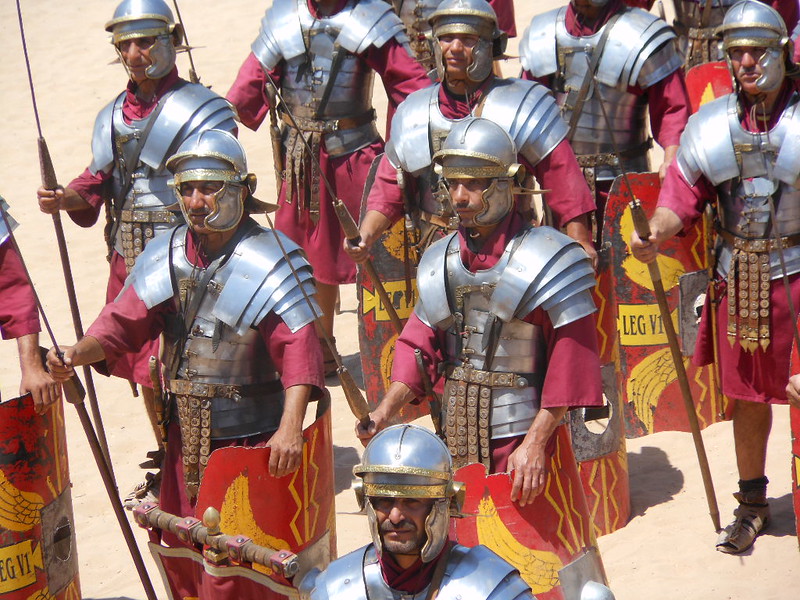How To Train Like a Roman
I was a history major in college, and to this day one of my great interests outside of medicine is learning more about the past. Sometimes I even like to combine these interests by considering whether people of the past have anything to teach us about good health (they certainly have a lot to teach us about bad health in terms of death from things like infection, trauma, and childbirth, but that’s a fairly obvious point that you probably don’t need me to explain in detail).
Thus it was that about a year back, I was watching a documentary about the Roman empire and got to wondering: just how exactly did the Romans prepare their soldiers for combat?
After all, it’s not like the Romans could simply dominate their opponents on the battlefield via superior technology, the way that modern nations can. There were no aircraft carriers, drones, submarines, fighter jets, missiles, or tanks in Roman times. The fundamental weapon of the age was the sword, wielded in hand-to-hand combat. Which means that – whatever other advantages the Romans possessed – they simply wouldn’t have been able to achieve their incredible record of conquest unless their soldiers were in top physical shape.
Am I saying that every Roman soldier looked like a Hollywood star? No. But it’s virtually certain that they were much fitter than the typical modern American. How did they do it? The answer is shockingly simple.
The primary mode of training in the Roman army is what is now called Rucking. Put simply, recruits to the Roman army were given a 45 pound bag to place on their back and then made to march for hours at a time. There was some other training too – basic instruction on how to handle a sword, how to swim, and how to set up and break down a camp – but the bulk of a recruits’ day was spent marching around with a 45 pound bag on his back. By the end of their training, a legionnaire was expected to be able to cover a 22 mile march in 5 hours time while wearing their 45 pound bag.
This highlights a point that I frequently make to patients, whether it’s about fitness, nutrition, or any other health habit: a simple plan, applied consistently, can bring exceptional results in the long-term.
Remember this the next time you decide to get into shape but then worry about the lack of a conveniently located gym, the fact that your local yoga class isn’t at a time that fits your schedule, or that the stationary bike in your basement is broken.
There’s nothing wrong of course with any of the above. If you like Peloton, or Orange Theory, or your personal trainer, stick with it. And depending on your interests and goals, rucking may not be the best workout program for you.
But never convince yourself that you lack the tools, time, or money to get into better shape. Your genetics are pretty identical to those of the Romans 2,000 years ago. If nothing else is an option, load up a knapsack with a few heavy hardcover books, put it on your back, and go for a brisk walk.
Do that every day for a few months, and you will almost certainly be in much better shape than you are now. Who knows? You might even conquer Gaul in the process.
Note: I will periodically post more about the health habits of the ancients in general, and Romans in particular, in the future. Not because it’s based in the most robust, cutting edge evidence, but because I find it fun to do so. In the meanwhile, if you missed my lecture to the Highbar Physical Therapy Lifestyle conference in Rhode Island last October, I covered some of this material in the final few minutes of my talk. Just click here if you are interested.
Original blog post date: March 15, 2024
—-
THANK YOU TO EVERYONE WHO ATTENDED OUR OPEN HOUSE: A DOSE OF WELLNESS! WE REALLY APPRECIATED SEEING AND/OR MEETING YOU!

















